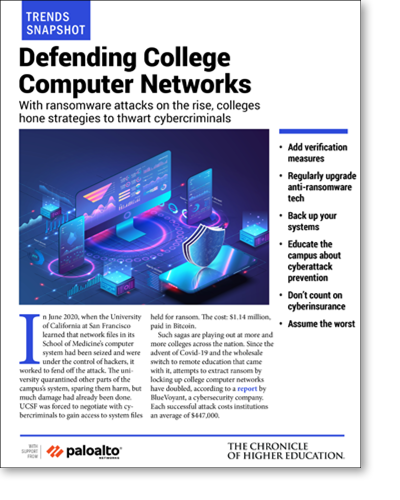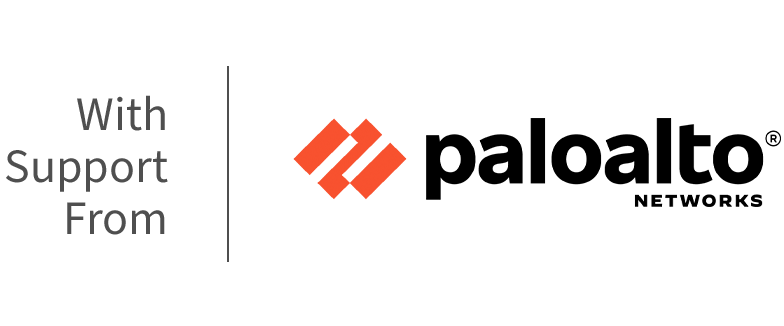

.

Colleges and universities contain valuable troves of sensitive and virtual information, making them a likely target for hackers and ransomware attacks. More and more, these sophisticated attacks end with colleges paying hefty ransoms for the release of their networks — and they show no sign of slowing down. How can colleges take action?
Download the latest Trends Snapshot, Defending College Computer Networks, for suggestions on how colleges can keep their computer networks safer through tactics, including:
- Increased user-ID verification measures.
- Develop and upgrade anti-ransomware technologies.
- Regularly backup systems to the cloud.
- Prevent phishing with cyberattack prevention education.
- Don’t rely on insurance.
- Implement a “zero-trust” policy.
.

Colleges and universities contain valuable troves of sensitive and virtual information, making them a likely target for hackers and ransomware attacks. More and more, these sophisticated attacks end with colleges paying hefty ransoms for the release of their networks — and they show no sign of slowing down. How can colleges take action?
Download the latest Trends Snapshot, Defending College Computer Networks, for suggestions on how colleges can keep their computer networks safer through tactics, including:
- Increased user-ID verification measures.
- Develop and upgrade anti-ransomware technologies.
- Regularly backup systems to the cloud.
- Prevent phishing with cyberattack prevention education.
- Don’t rely on insurance.
- Implement a “zero-trust” policy.
.
.
By submitting this form, I agree to share the information above with The Chronicle and Palo Alto Networks for marketing purposes.
